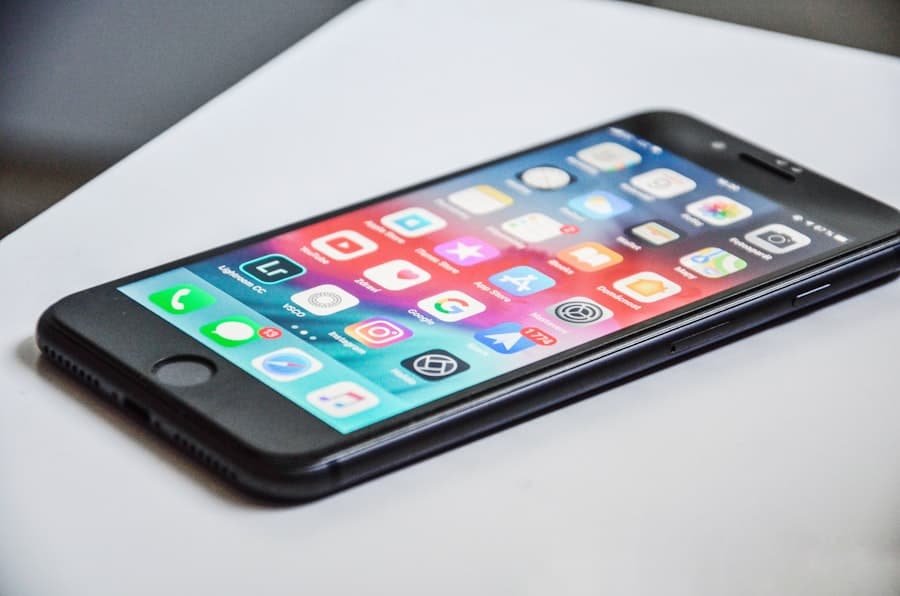The Internet of Everything (IoE) represents a significant evolution in the way businesses operate, transcending the traditional Internet of Things (IoT) by integrating not just devices but also people, processes, and data. This interconnected framework allows for a seamless flow of information, enabling organisations to harness insights that were previously unattainable. In essence, IoE encompasses the convergence of various technologies, including cloud computing, big data analytics, and artificial intelligence, creating a holistic ecosystem that enhances operational efficiency and drives innovation.
As businesses increasingly adopt IoE, they are not merely upgrading their technological infrastructure; they are fundamentally transforming their operational paradigms. The integration of smart devices and systems facilitates real-time data collection and analysis, empowering organisations to make informed decisions swiftly. This shift is particularly crucial in today’s fast-paced market environment, where agility and responsiveness can determine a company’s success or failure.
By leveraging IoE, businesses can optimise their processes, improve customer engagement, and ultimately gain a competitive edge.
Summary
- IoE in business refers to the interconnectedness of people, processes, data, and things, creating new opportunities for innovation and growth.
- IoE revolutionizes business operations by enabling real-time data collection, analysis, and decision-making, leading to increased efficiency and productivity.
- Implementing IoE in business brings benefits such as improved operational efficiency, cost savings, enhanced customer experiences, and new revenue streams.
- Challenges and risks of IoE in business include security vulnerabilities, data privacy concerns, interoperability issues, and the need for skilled workforce.
- Data security is a critical aspect of IoE in business, requiring robust measures to protect sensitive information and prevent cyber threats.
How IoE is Revolutionizing Business Operations
The impact of IoE on business operations is profound and multifaceted. One of the most significant changes is the enhancement of supply chain management. With IoE, companies can track inventory levels in real-time, monitor the condition of goods during transit, and predict demand fluctuations with greater accuracy.
For instance, retailers can utilise smart shelves equipped with sensors that alert them when stock levels are low, thereby preventing stockouts and ensuring that customers find what they need when they visit a store. This level of operational visibility not only streamlines processes but also reduces costs associated with overstocking or understocking. Moreover, IoE facilitates improved collaboration across departments and with external partners.
By connecting various stakeholders through a unified platform, businesses can share insights and data more effectively. For example, a manufacturing company might integrate its production line with suppliers and distributors through IoE technologies, allowing for real-time updates on production schedules and inventory levels. This interconnectedness fosters a more agile response to market demands and enhances overall productivity.
As a result, organisations can adapt to changes more swiftly, ensuring they remain relevant in an ever-evolving business landscape.
The Benefits of Implementing IoE in Business

Implementing IoE in business offers a plethora of benefits that extend beyond mere operational efficiency. One of the most notable advantages is the ability to harness data for strategic decision-making. With vast amounts of data generated from interconnected devices, businesses can employ advanced analytics to uncover trends and insights that inform their strategies.
For instance, a financial services firm might analyse customer behaviour patterns through IoE data to tailor its offerings, leading to increased customer satisfaction and loyalty. Additionally, IoE enhances customer engagement by enabling personalised experiences. Businesses can leverage data collected from various touchpoints to understand individual preferences and behaviours better.
For example, a hospitality company could use IoE to track guest preferences during their stay, allowing them to offer customised services that enhance the overall experience. This level of personalisation not only fosters customer loyalty but also drives repeat business, ultimately contributing to increased revenue.
Challenges and Risks of IoE in Business
Despite the numerous advantages associated with IoE, businesses must navigate several challenges and risks when implementing these technologies. One significant concern is the complexity of integrating diverse systems and devices. As organisations adopt various IoE solutions, they may encounter compatibility issues that hinder seamless communication between devices.
This fragmentation can lead to inefficiencies and increased operational costs if not managed effectively. Moreover, the rapid pace of technological advancement poses a challenge for businesses striving to keep up with the latest IoE innovations. Companies may find themselves investing in technologies that quickly become obsolete or require frequent updates to remain effective.
This constant need for adaptation can strain resources and divert attention from core business activities. Therefore, organisations must develop a strategic approach to IoE implementation that considers long-term sustainability and scalability.
IoE and Data Security in Business
Data security is a paramount concern in the realm of IoE, as the interconnected nature of devices increases the potential for cyber threats. With vast amounts of sensitive information being transmitted across networks, businesses must prioritise robust security measures to protect against breaches. For instance, a healthcare provider utilising IoE devices to monitor patient health must ensure that patient data is encrypted and secure from unauthorised access.
Failure to do so could result in severe legal repercussions and damage to the organisation’s reputation. Furthermore, the challenge of securing IoE devices extends beyond traditional cybersecurity measures. Many IoE devices have limited processing power and may not support advanced security protocols, making them vulnerable to attacks.
Businesses must adopt a multi-layered security approach that includes regular software updates, network segmentation, and employee training on best practices for data protection. By proactively addressing these security concerns, organisations can mitigate risks associated with IoE implementation.
IoE and Customer Experience in Business

The integration of IoE into business operations has a transformative effect on customer experience. By leveraging real-time data from connected devices, companies can gain deeper insights into customer preferences and behaviours. This understanding enables businesses to tailor their offerings more effectively, resulting in enhanced satisfaction and loyalty.
For example, an e-commerce platform might analyse browsing patterns to recommend products that align with individual customer interests, creating a more personalised shopping experience. Moreover, IoE facilitates improved communication between businesses and customers. Through connected devices such as mobile applications or smart home systems, companies can engage with customers in real-time, providing timely updates and support.
For instance, a smart appliance manufacturer could send notifications to customers regarding maintenance schedules or product updates directly through their devices. This proactive approach not only enhances customer satisfaction but also fosters a sense of trust and reliability between the brand and its customers.
Case Studies of Successful IoE Implementation in Business
Several companies have successfully harnessed the power of IoE to drive innovation and improve operational efficiency. One notable example is General Electric (GE), which has integrated IoE technologies into its industrial operations through its Predix platform. By connecting industrial machines and equipment to the cloud, GE can collect vast amounts of data for analysis.
This data-driven approach has enabled GE to optimise maintenance schedules for its machinery, reducing downtime and increasing productivity across its operations. Another compelling case study is that of Amazon Web Services (AWS), which has leveraged IoE to enhance its logistics operations. By employing connected devices throughout its supply chain, Amazon can monitor inventory levels in real-time and optimise delivery routes based on traffic conditions and demand fluctuations.
This level of operational efficiency not only reduces costs but also ensures that customers receive their orders promptly, reinforcing Amazon’s reputation for exceptional service.
The Future of IoE in Business
Looking ahead, the future of IoE in business appears promising as technological advancements continue to unfold. The proliferation of 5G networks will significantly enhance the capabilities of IoE devices by providing faster data transmission speeds and lower latency. This advancement will enable businesses to deploy more sophisticated applications that rely on real-time data processing, further driving innovation across various sectors.
Additionally, as artificial intelligence (AI) becomes increasingly integrated into IoE systems, businesses will be able to automate decision-making processes based on data insights more effectively. For instance, smart factories could utilise AI algorithms to optimise production schedules dynamically based on real-time demand signals from connected devices. This level of automation will not only enhance operational efficiency but also allow organisations to respond more swiftly to market changes.
In conclusion, the Internet of Everything is poised to reshape the business landscape significantly by enhancing operational efficiency, improving customer experiences, and driving innovation across industries. As organisations navigate the challenges associated with implementing these technologies, those that embrace IoE strategically will likely emerge as leaders in their respective fields.
The Internet of Everything (IoE) in Business is revolutionising the way companies operate and connect with customers. This interconnected network of devices and data is transforming industries across the globe. In a related article on live social streaming, the future of digital marketing is explored, showcasing how businesses can leverage technology to reach their target audience in real-time. This innovative approach to marketing is just one example of how IoE is reshaping the business landscape.
FAQs
What is Internet of Everything (IoE) in Business?
The Internet of Everything (IoE) in business refers to the connection of people, processes, data, and things through the internet to create new opportunities and improve business outcomes.
How does IoE impact businesses?
IoE can impact businesses by enabling them to create new revenue streams, improve operational efficiency, enhance customer experiences, and drive innovation through connected devices and data.
What are the key components of IoE in business?
The key components of IoE in business include people, processes, data, and things. These components are interconnected through the internet to enable seamless communication and collaboration.
What are some examples of IoE in business?
Examples of IoE in business include smart manufacturing processes, connected supply chains, intelligent energy management systems, and personalised customer experiences through data-driven insights.
What are the benefits of implementing IoE in business?
The benefits of implementing IoE in business include improved productivity, cost savings, enhanced decision-making capabilities, better customer engagement, and the ability to create new business models and revenue streams.
What are the challenges of implementing IoE in business?
Challenges of implementing IoE in business include security and privacy concerns, interoperability issues, data management complexities, and the need for skilled personnel to manage and leverage IoE technologies effectively.
